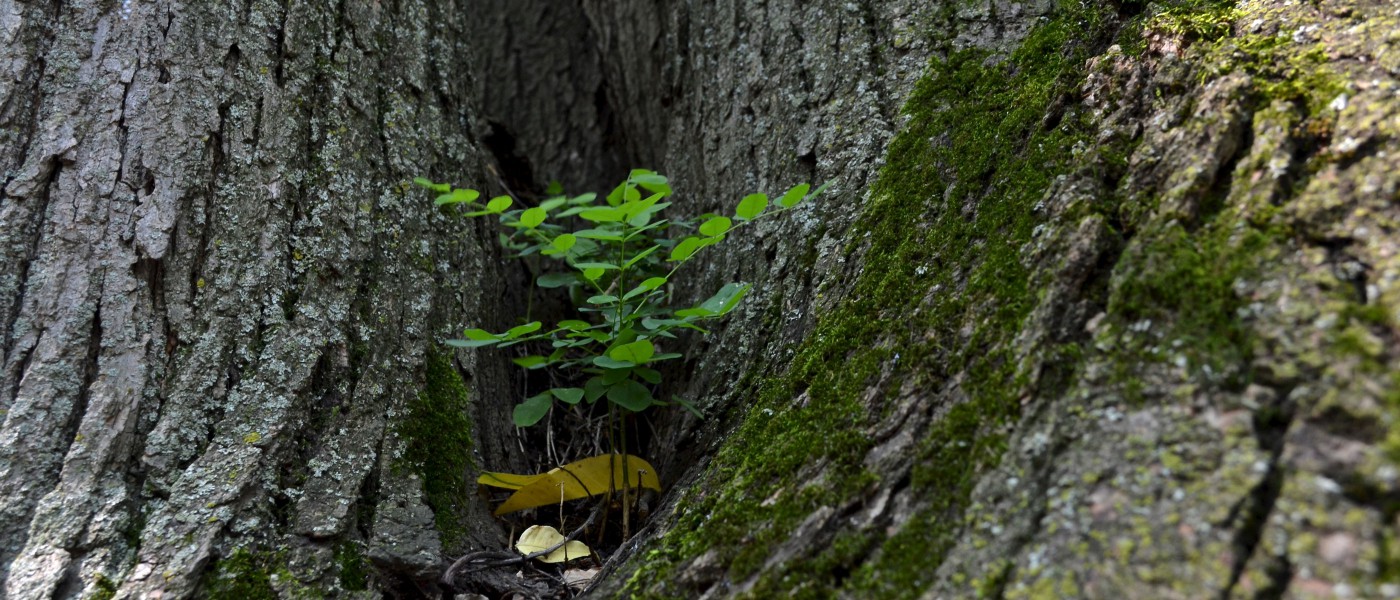The Age of a Tree
How old is that tree? This is one of the most common questions we get as arborists. People often assume a tree’s age can be discerned from its trunk diameter, and there may be a rough correlation. But even trees of the same species growing very near each other often have dramatically different growth rates, depending on their specific growing conditions and genetic predispositions. And what exactly do we mean by age? When it comes to trees, we can consider age in terms of mass, chronology, or condition.
At BBG, where we generally know a lot about a plant’s provenance, we can often answer the query by pointing to a tree’s accession number, which can be seen on its identification label.
But the tag doesn’t tell the whole story. An accession number tells us when a specimen arrived at the Garden, not when it germinated. Trees are usually five to seven years old when they are planted on-site, so a tree with, say, a 1916 accession date, like the American yellowwood in the Plant Family Collection, is probably older than the Garden itself, which was founded in 1910.
Even if we did know when a tree actually germinated, its chronological age would only tell part of the story. There is also its biological age to consider. Trees that have had a hard life show signs of aging that are typical of much older trees—slow growth, dieback from the tips, suckering, early fall color and leaf drop. Street trees are famously short-lived and smaller than their cousins in other environs. They often exhibit signs of senescence at a relatively young age.
Another thing to consider is that a tree's oldest growth coexists with its newest. This can be seen very nicely in several of the pagoda trees (Styphnolobium japonicum) in the Plant Family Collection.
While this specimen was planted in 1930, the only parts of the tree dating back that far are now deep within its trunk. We could say that the middle-most ring of the tree is about 89. The next ring is 88 and so on, until we get to this year’s growth, which is less than a year old. A cross section of a tree would show evidence of all stages of the tree's life. We would likely see narrow rings as the tree struggled to establish in its early years, a phenomenal amount of mass added in its middle years, and evidence of slower growth in later years. The tree is an infant, a toddler, a teen, an adult, and a senior citizen all at the same time.
Looking at the mass of an ancient tree, we could say that it is partly very old and partly very new and mostly middle aged. A hollow tree, on the other hand, will have lost years and years of its oldest growth. Thus it’s “younger” on average, thought it may be shakier and shorter-lived than its intact cousin.
Trees show signs of continuity, growth, and renewal all at once. How old is a tree, then? Many ages at the same time.


